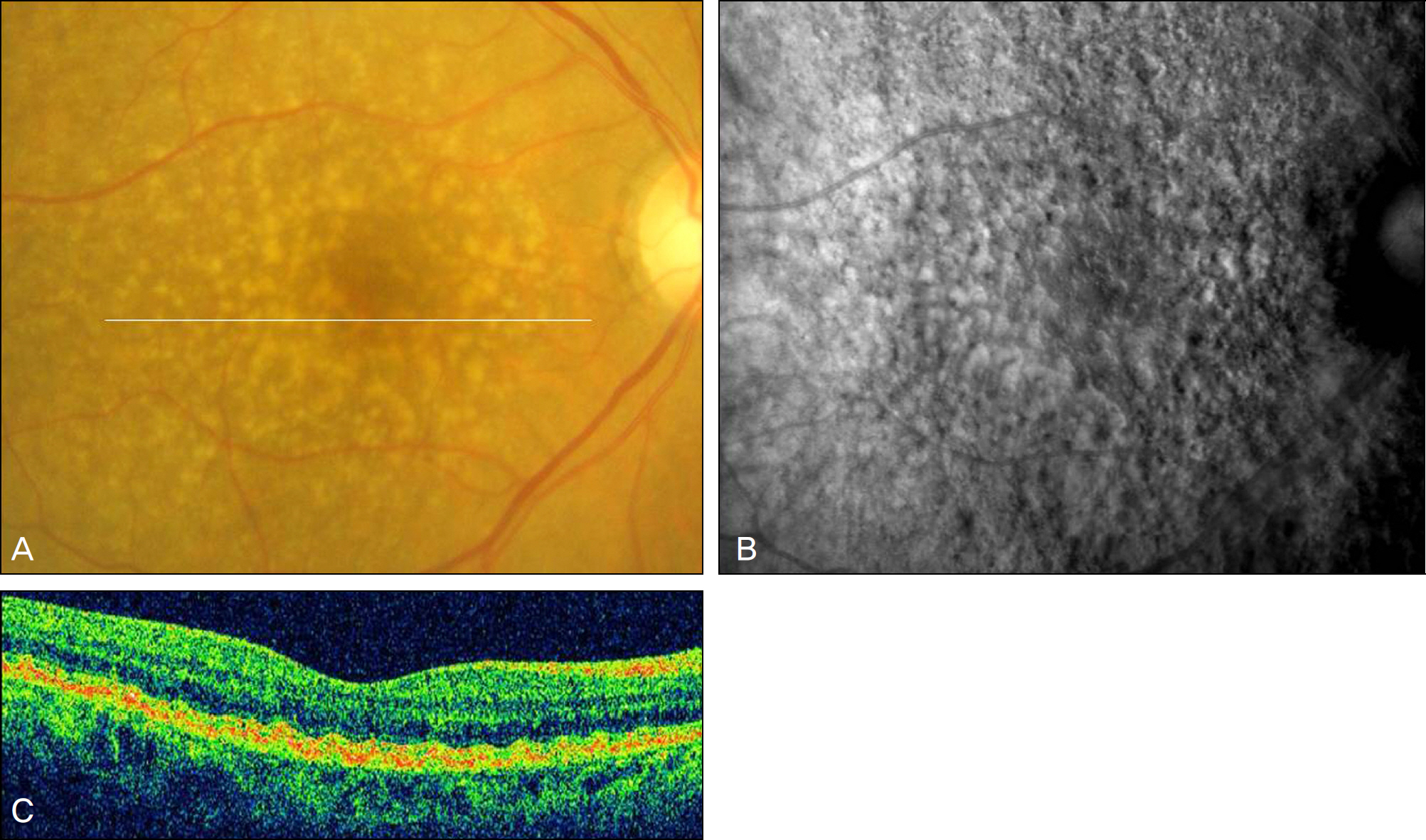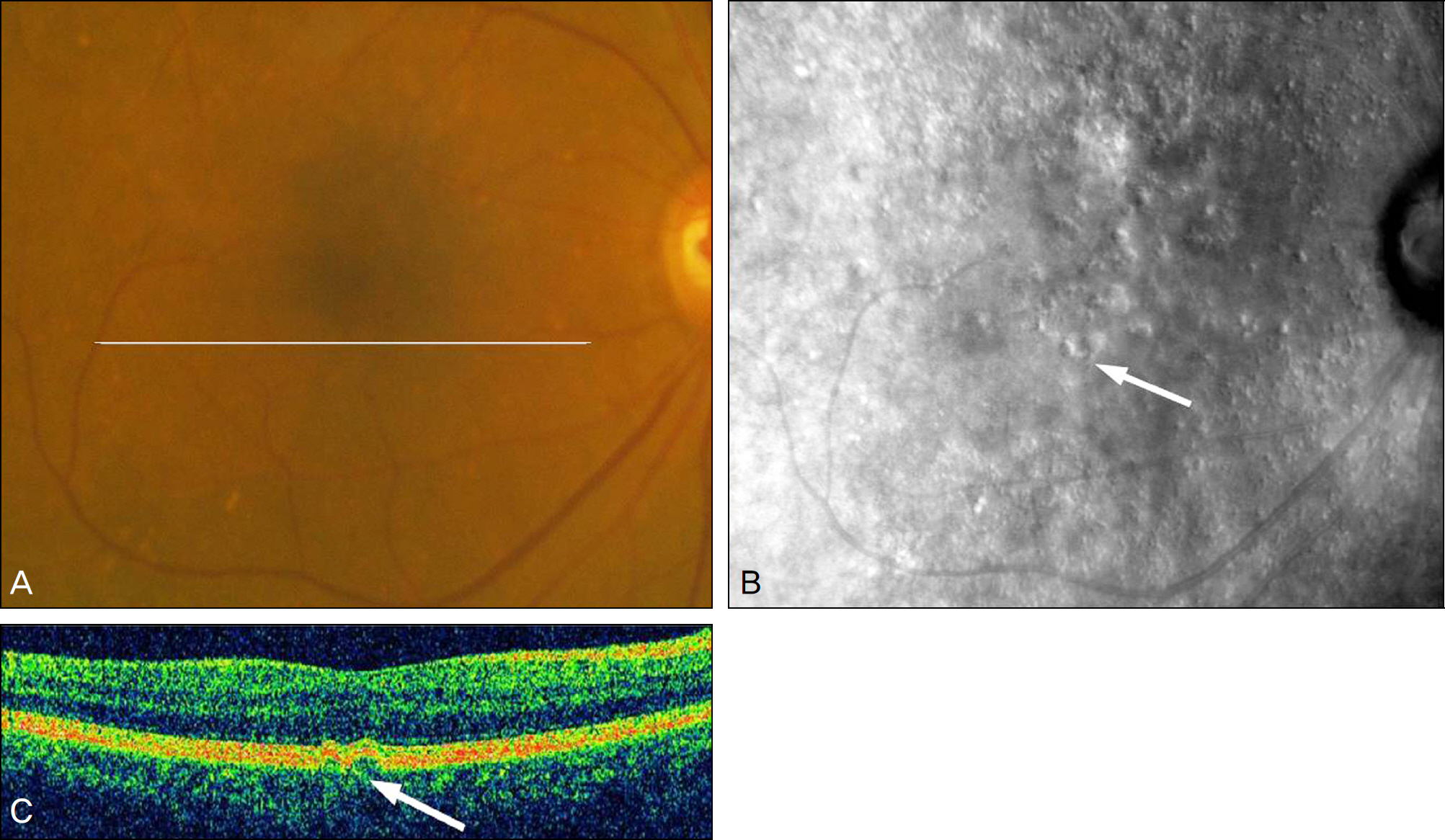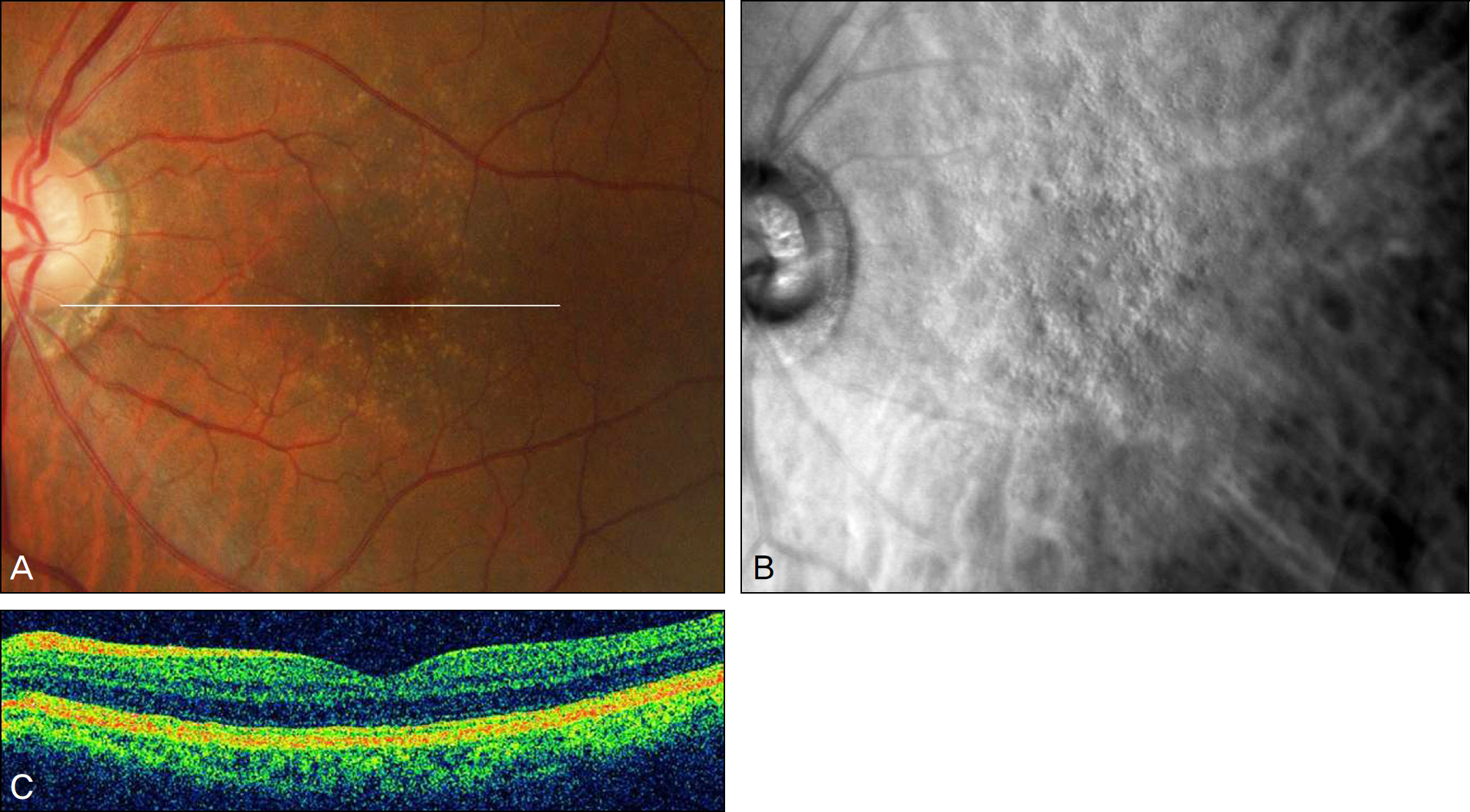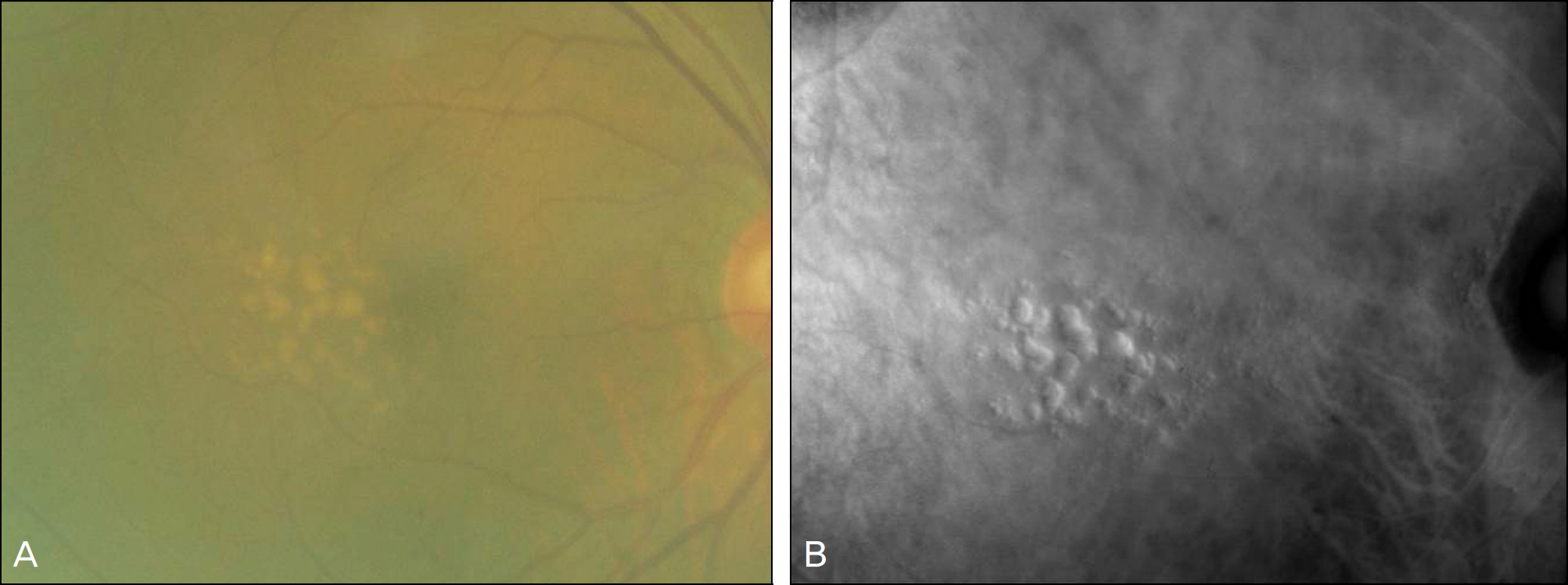J Korean Ophthalmol Soc.
2011 Oct;52(10):1189-1194. 10.3341/jkos.2011.52.10.1189.
The Comparison of SLO Retromode Images with Conventional Fundus Photography for the Detection of Drusen
- Affiliations
-
- 1Department of Ophthalmology, Hanyang University College of Medicine, Seoul, Korea. brlee@hanyang.ac.kr
- KMID: 2215001
- DOI: http://doi.org/10.3341/jkos.2011.52.10.1189
Abstract
- PURPOSE
To compare SLO (scanning laser ophthalmoscope) retromode images with conventional color fundus photography for the detection of drusen.
METHODS
We obtained color fundus photography and SLO retromode images of the ten fellow eyes of ten patients with unilateral exudative age-related macular degeneration (AMD) and twenty eyes of 20 patients who had only drusen without exudative AMD. The numbers of druse in each image were compared within the same retinal boundary.
RESULTS
In the fellow eyes of unilateral exudative AMD, an average number of 63.1 +/- 81.9 drusen in color fundus photography and an average number of 141.3 +/- 124.1 drusen in SLO retromode images were detected (p = 0.005). In the eyes with only drusen, an average number of 57.0 +/- 43.9 drusen in color fundus photography and an average number of 112.2 +/- 82.0 drusen in SLO retromode images were detected (p = 0.000). In the presence of media opacity like cataract, drusen were better detected in SLO retromode images than they were in color fundus photography.
CONCLUSIONS
About twice as many drusen were detected in SLO retromode images than in color fundus photography. Drusen were also better detected in SLO retromode images in cases of media opacity. SLO retromode images might provide more sensitive images for the detection of drusen than does color fundus photography.
Keyword
Figure
Reference
-
References
1. Klein R, Klein BE, Linton KL. Prevalence of age-related maculopathy: the Beaver Dam Eye Study. Ophthalmology. 1992; 99:933–43.2. Pauleikhoff D, Barondes MJ, Minassian D, et al. Drusen as risk factors in age-related macular disease. Am J Ophthalmol. 1990; 109:38–43.
Article3. Gass JD. Drusen and disciform macular detachment and degeneration. Arch Ophthalmol. 1973; 90:206–17.
Article4. Vinding T. Occurrence of drusen, pigmentary changes and exudative changes in the macula with reference to age-related macular degeneration An epidemiological study of 1000 aged individuals. Acta Ophthalmol. 1990; 68:410–4.
Article5. Oshima Y, Ishibashi T, Murata T, et al. Prevalence of age-related maculopathy in a representative Japanese population: the Hisayama Study. Br J Ophthalmol. 2001; 85:1153–7.6. Tanaka Y, Shimada N, Ohno-Matsui K, et al. Retromode retinal imaging of macular retinoschisis in highly myopic eyes. Am J Ophthalmol. 2010; 149:635–40.
Article7. Yamamoto M, Mizukami S, Tsujikawa A, et al. Visualization of cystoid macular oedema using a scanning laser ophthalmoscope in the retromode. Clin Exp Ophthalmol. 2010; 38:27–36.
Article8. Ishiko S, Akiba J, Horikawa Y, Yoshida A. Detection of drusen in the fellow eye of Japanese patients with age-related macular degeneration using scanning laser ophthalmoscopy. Ophthalmology. 2002; 109:2165–9.
Article9. Friedman DS, Katz J, Bressler NM, et al. Racial differences in the prevalence of age-related macular degeneration. The Baltimore Eye Survey. Ophthalmology. 1999; 106:1049–55.10. Schachat AP, Hyman L, Leske MC, et al. Features of age-related macular degeneration in a black population. The Barbados Eye Study Group. Arch Ophthalmol. 1995; 113:728–35.11. Klein R, Clegg L, Cooper LS, et al. Prevalence of age-related maculopathy in the Atherosclerosis Risk in Communities Study. Arch Ophthalmol. 1999; 117:1203–10.
Article
- Full Text Links
- Actions
-
Cited
- CITED
-
- Close
- Share
- Similar articles
-
- Cystoid Macular Edema Detected by Scanning Laser Ophthalmoscopy in Retro-Mode
- Bilateral Optic Disc Drusen Mimicking Papilledema
- The Significance of Fundus Photography Without Mydriasis During Health Mass Screening
- Fundus Photography with a Smartphone
- Efficacy of Single-Field Non-Mydriatic Digital Fundus Photography for Screening Diabetic Retinopathy






